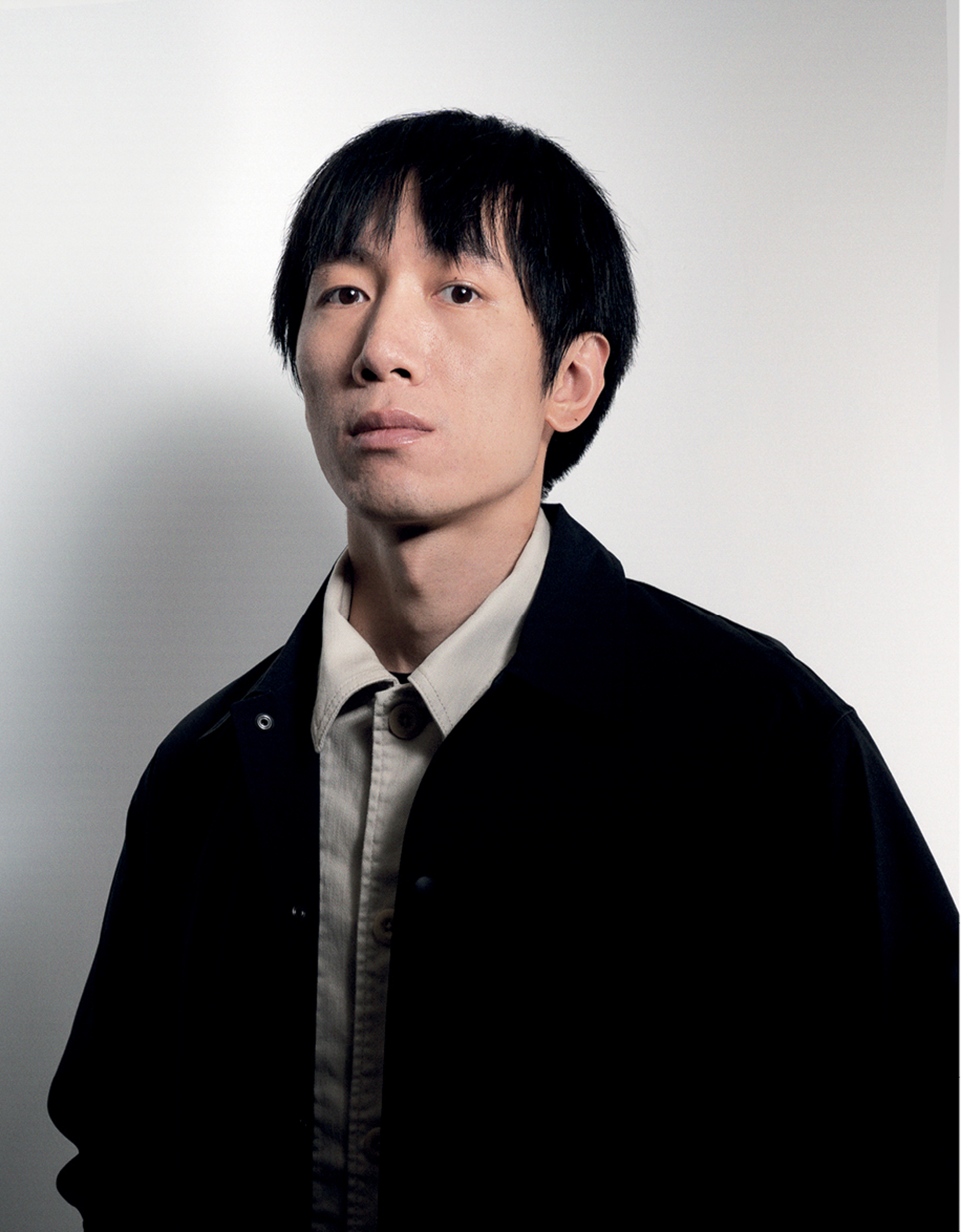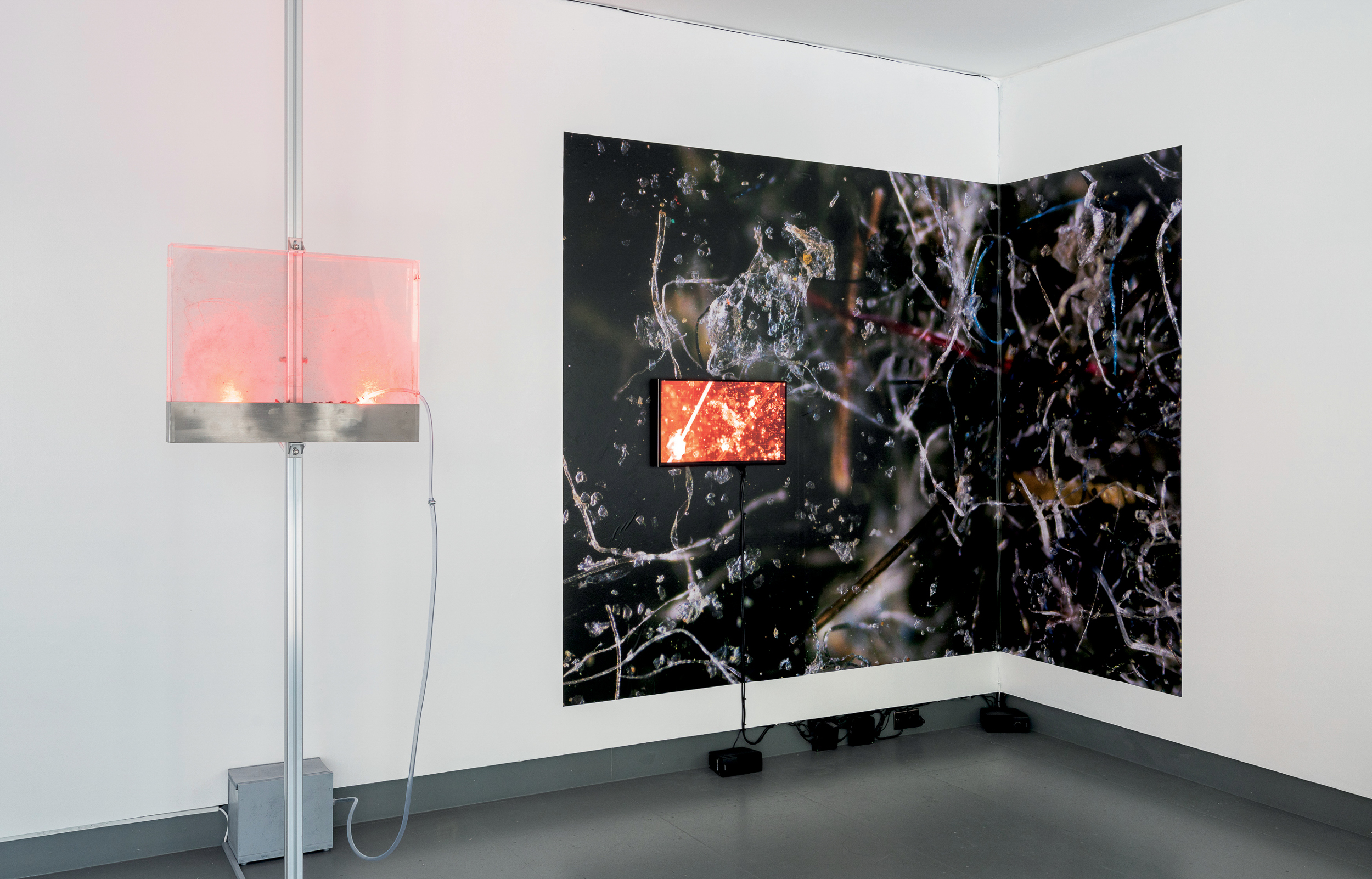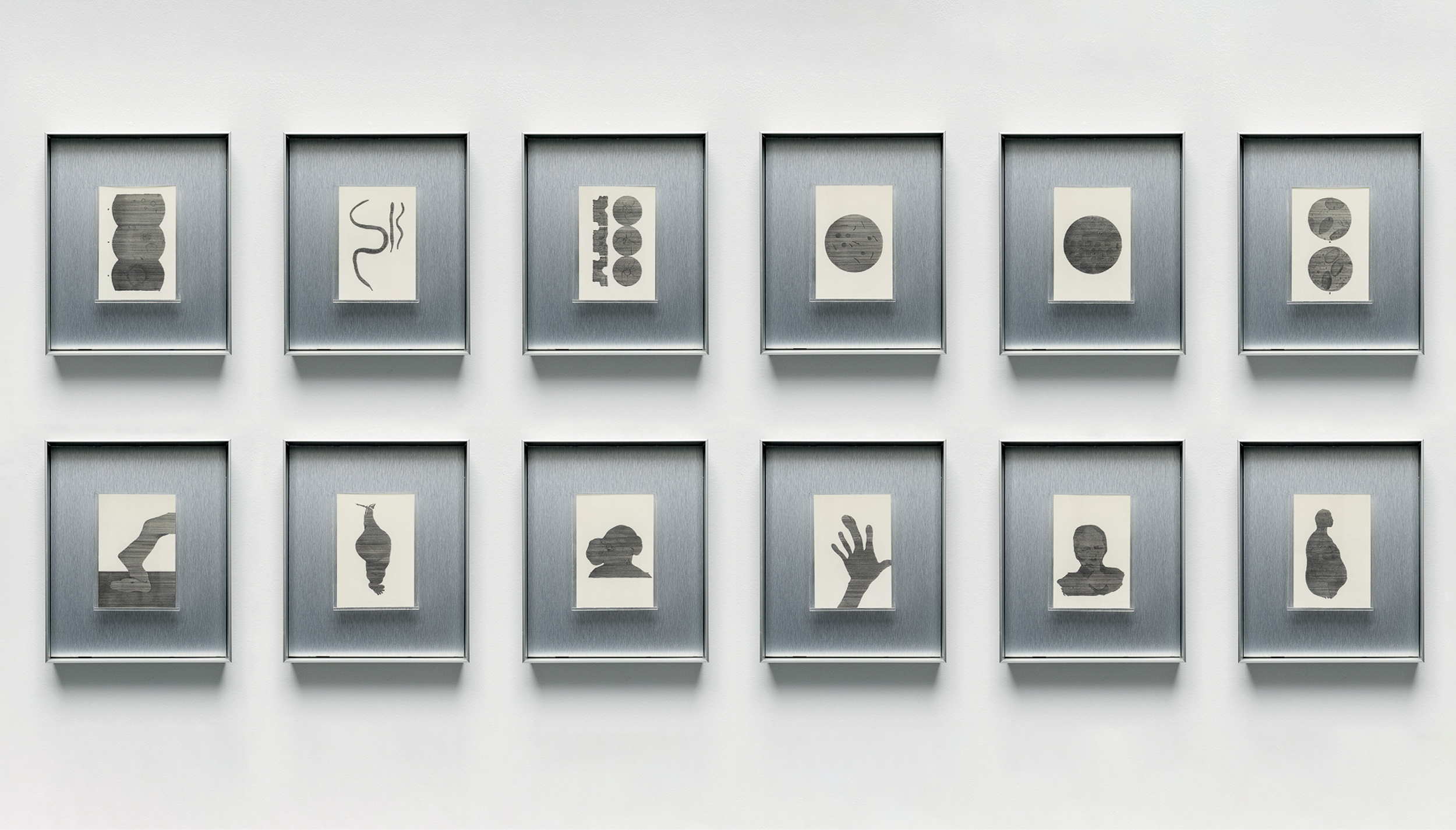Musquiqui Chihying: The Price of Knowing
By Anna Lentchner

Portrait of MUSQUIQUI CHIHYING. Courtesy the artist.
Today, postcolonial studies are so deeply integrated into other academic disciplines it is difficult to distinguish the framework from broader notions of “leftism.” But only a few decades ago, postcolonialism was still emerging as a relatively novel, or at least strictly theoretical, field—particularly in and about East Asia, and even more so with regard to China. This has left a persistent void in theories surrounding the present state of the Global South which, as Musquiqui Chihying demonstrates, is intrinsically intertwined with the philosophies and systems governing capitalist production in Asia.
Born in Taipei in 1985, Chihying reimagines popular imagery to bridge the gaps between decolonization discourse and its presence in East Asia, which often pivots on the Japanese occupations across the continent during the 1930s and ’40s. He realized the limits of both frameworks after studying at the Universität der Künste Berlin under the genre-defying filmmaker Hito Steyerl. There, he absorbed the German philosophical and avant-garde tradition, much of which examines the cultural and phenomenological dissemination of imagery. Inspired by Steyerl, he began to produce films and artworks that posed similar questions, but with a different focus, forging new visual vocabularies to expand narrow or antiquated ideologies. “Hito made me question the image itself,” Chihying told me over Zoom from Manchuria, where he is currently doing an artist residency. “But I wanted to relate that to Asia, to the colonialism of the past and neo-imperialism in the present. The canon often focuses on topics that are not applicable in Asia, or leaves out essential connections.”
Chihying’s latest solo exhibition, “Ghost in the Sea” (2024) at Taipei’s nonprofit C-Lab, is the culmination of this decades-long exploration into transnational postcolonialism. Having been awarded the Hong Foundation’s seventh Tung Chung Prize, he created a sweeping multimedia exposition of the Afrasian Sea: the site through which indentured Asian laborers (“coolies”) were brought to Europe and the Americas to replace African slaves after abolition—a history that Chihying laments he “was not taught in either Taiwan or Germany,” despite prevalent conversations about colonialism. Now, he reveals, the same ocean houses roughly 90 percent of global data through an extensive network of polyethylene cables, forming the undersea venous system of digital transcontinental communication. As a quasi-Cold War ensues between China and the United States over this infrastructure, Chihying considers how the seascape has become a recursive harbor of global capitalism, often to terrible ends.
Many of the works that form “Ghost in the Sea” (all 2024) juxtapose the new against the old to manifest how these submarine histories have reemerged. In The Cable, he depicts the subject’s internal structure in five graphite-on-paper works, contrasted by a 3D-scanned-and-printed cable that was used to transmit telegraphs during the Japanese colonial period. His nine-minute virtual-reality film The Sallow Sea is more experimental, merging literature, theory, technology, and pop culture to surreally anthropomorphize the ocean. Then there is The Sallow Man, a looped NFT whose “skin gradually turned yellow at an unknown point in time,” alluding to sociologist Paul Gilroy’s theory that racialized “human fuel” propelled capitalism. The title was inspired by “the Laughing Man” from an orientalist 1949 JD Salinger story, in which the hero is maimed by Chinese bandits (although this character was somewhat reclaimed by the 1990s-era manga The Ghost in the Shell, wherein the Laughing Man reappears as a mastermind hacker antagonist). The evolution of East Asian representation has indeed been tumultuous.

Installation view of MUSQUIQUI CHIHYING’s The Dust, 2023, Japanese dialogue, English and Chinese subtitles, black-and-white dust from Pitt Rivers Museum, air compressor, screen, light, wallpaper, dimensions variable, at "Too Loud a Dust," Tabula Rasa Gallery, London, 2023. Photo by Mirko Boffelli. Courtesy the artist and Tabula Rasa Gallery, Beijing/London.

Installation view of MUSQUIQUI CHIHYING’s The Postcard, 2023, pencil drawing, set of 12, 13 × 10 cm each, at "Too Loud a Dust," Tabula Rasa Gallery, London, 2023. Photo by Mirko Boffelli. Courtesy the artist and Tabula Rasa Gallery, Beijing/London.
Chihying first explored the idea of “yellowness” as a Western construct in “Too Loud a Dust” (2023), conceived during his residency at London’s Delfina Foundation over the pandemic. At the time, rampant anti-Asian vitriol and society’s newfound obsession with cleanliness reminded Chihying of Mary Douglas’s Purity and Danger (1966), in which the anthropologist famously posits that “dirt is matter out of place.” He began conducting research on how the West historically objectified the Asian body as sickly, such as a British book from 1910 that compiled photographs of disfigured and diseased people in East Asia. He reimagines these images as oddly shaped silhouettes in The Postcard (2023), a series of monochromatic sketches that decontextualize the original photographs’ racial connotations. He also interrogated orientalism in art institutions: for his kinetic sculpture The Dust (2023), Chihying collected grime from Japanese antiquities at the Pitt Rivers Museum in Oxford and placed it in a glass vitrine, the colonial display-case of choice. An accompanying video depicts the dust under a microscope, and as poems are read aloud, air is released into the vitrine, forcing the particles to dance.
Suffice it to say, Chihying’s work is not only engaged in aesthetic production. Even his name (a pseudonym inspired by his old band) seeks to halt assumptions about ethnicity and nationality: “My family name is Chihying, but I like the ambiguity of Musquiqui. Reading it, one cannot immediately discern that I am a ‘Chinese’ artist, which is a label I wrestle with, being from Taiwan.” It is rather surprising then to learn that he does not have a PhD, like so many research-based artists; rather he hails from a fine arts background (receiving his BA from Taipei National University of the Arts in 2008), and apart from Steyerl’s media course in 2011, he has not sought out further degrees. Chihying’s research is self-initiated and largely independent, and despite his practice emitting the soft musk of academia, it evades the institutional structures that postcolonial inquiry is so often bound to.
Chihying’s undisciplined explorations may have been inspired by Steyerl, who has written extensively on how institutional research “normalizes, generalizes, and regulates,” which is to say it “streamline[s] creativity.” Claire Bishop even references the same quote in her new polemic Disordered Attention (2024) in a chapter that critiques research-based art. Bishop does not delve into the moving-image (like Steyerl), but rather outlines why, in an age already overloaded with information, artworks that compile and regurgitate historical archives say far too little despite displaying far too much. Chihying has read this critique and notes its resonance: “The position is very interesting and has generated a lot of discussion between me and my colleagues. We do see the problem that she points out. On the other hand, I see the potential of the arts to go across disciplines—philosophy, sociology, anthropology—and present these topics visually, as opposed to in writing. Every artist has their own goal; for some it is sensation, but to me art is a practice of knowledge production.”

Installation view of MUSQUIQUI CHIHYING’s The Smart City, 2024, alloy coins, magnifying glass, hexagonal lighting table, 180 × 180 cm, at "Ghost in the Sea," C-LAB, Art Space II, Taipei City, 2024. Photo by Sean Wang. Courtesy the Hong Foundation.

Installation view of MUSQUIQUI CHIHYING’s The Looty, 2022, animation, holographic projection, NFT: 10 sec, at "On the Faience of Your Eyes," Liusa Wang Gallery, Paris, 2022. Courtesy Liusa Wang Gallery.
And produce he does. Another work exhibited in “Ghost,” The Smart City (2024) invokes Chihying’s recurring motif of commemorative coins. He experienced this propaganda tool firsthand in 2003, when China released five coins showcasing Taiwanese landscapes. He later reimagined the tokens for The Cultural Center (2018–22), a vitrine housing golden coins that depict modern, Chinese-funded cultural institutions in Africa. While these investments are often framed as imperialist, The Cultural Center alludes to a 600-year-old Chinese coin found in Kenya, suggesting that the nations’ trade relations predated Europe’s violent Age of Discovery. Chihying explains: “We require new language to assess the infrastructure projects. We cannot compare this centuries-old relationship to bloody, European colonization.” Coins show up again in The Looty (2022), which portrays a cartoonish Pekingese dog that was supposedly seized by European troops after the Second Opium War and gifted to Queen Victoria (who aptly named her “looty”). To subvert the coin’s oppressive connotation, Chihying also presented The Looty as a holographic NFT—a decentralized currency that is banned in China.
Evidently, Chihying is not interested in simple reductions or condemnations. Rather, his work scrupulously dissects the imagery that upholds power structures to highlight and destabilize its dissemination. The coin motif’s latest iteration is no different: sets of magnifying glasses, alloy tokens, and company logos are displayed on a hexagonal lighting table, with each coin representing “smart city” projects developed by Chinese tech firms in South Africa, Kenya, Mauritius, Indonesia, and Malaysia. “Because I appropriate both modern logos and colonial imagery, viewers can form their own interpretation,” he says. If one is curious about the nefarious technology behind these city projects, Chihying also provides a QR code that explicates the dangers. Some critics may find this lack of conclusion, or even the artist’s lack of argumentative posturing, as a kind of cop out; as a way to turn “the library . . . [into] the work of art itself,” to quote Bishop. But perhaps restoring the blown fuse of curiosity depends on visual reconfigurations like these. As Chihying says, “my learning began with unlearning.”
.jpg)






